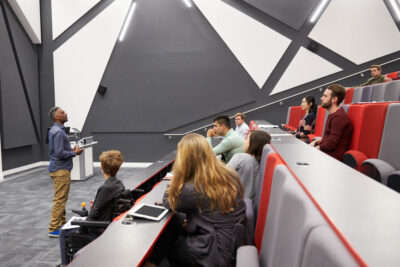Shifting from crisis response to strategic thinking
A critical moment
As the pandemic extends into the start of another academic year, the daily or weekly crises of life under COVID continue to disrupt core institutional activities of teaching and research while at the same time making it challenging to plan for the long-term. Despite these difficulties, this is a crucial moment to pull up and see the big picture. We need to move beyond temporary, improvised solutions and begin building long-term sustainable strategies. The window of opportunity for more transformational change is already starting to close, however. As the urgency of the crisis begins to dissipate, we risk being overcome by the understandable desire to return to “normal.”
COVID didn’t change the fundamental challenges
Many of the challenges that consume our daily lives right now will eventually recede—debates over mask and vaccine mandates, the logistics of testing, tracing, and quarantining, barriers to international student enrollment. But COVID’s larger impact has been to highlight and accelerate long-standing issues that were worsening even before the pandemic.
Five areas stand out:
- Enrollment—colleges and universities are competing for a shrinking pool of traditional age students
- Student experience—students have rising expectations for virtual and face-to-face engagement in recruiting, course delivery, and student services
- Financial sustainability—students are unable or unwilling to pay for the rising costs of education
- Mental health and wellbeing—students need and expect support for mental health inside and outside of the classroom
- Diversity, equity, inclusion, and social justice—students are demanding rapid progress and engagement on institutional racism
These trends were clear before COVID, but the pandemic and the social justice movements of the past two years have accelerated each of these trends.
Change was hard before, it’s even harder now
Most institutions made some progress in a few of these areas before COVID, but a range of barriers kept improvements slow and isolated. Decentralized decision-making and governance processes prioritized individual academic units and stakeholders over institutional goals and initiatives. Meanwhile, poorly aligned organizational structures and complex bureaucracies burdened faculty, staff, and students and resisted attempts to streamline or improve operations. Finally, incremental budget models and a lack of new resources forced institutions to prioritize funding for existing activities over new initiatives.
The COVID crisis showed that institutions could overcome many of these barriers in an emergency, but it did so at a high cost:
Burnout
Students, faculty, staff, and administrators are exhausted by the efforts required to manage the crisis. There is little to no energy left for new initiatives or incremental work.
Lack of Trust
Controversial decisions made in a physically dangerous and politically polarized environment have led to a lack of trust among all major stakeholder groups. Gaining consensus on institutional priorities is more difficult than ever.
Turnover
Increased leadership turnover means that many senior administrators are new to their role and/or to their institution. New leadership teams still need to build cohesion, understanding, and trust.
Protectionism
The loss of resources and of familiar ways of working and relating has led to a loss aversion mindset where individuals and groups strive to protect what they have rather than risk collaborating on uncertain new projects.
False Confidence
Ironically, the fact that the worst-case scenario did not come to pass for most institutions—as enrollments rebounded, state funding increased, federal stimulus funds flowed, and high-profile philanthropy supported some institutions—has led to a misplaced belief that change is no longer necessary.
Leading beyond the pandemic
Institutional leaders face the double challenge of managing an extended crisis while simultaneously supporting long-term transformation. We are seeing increasing numbers of institutions launch strategic planning processes but with a clear recognition that traditional approaches to strategic planning are no longer adequate.
Here are some of the key lessons they are learning:
- Focus on mission as the rationale for change (better serving students, your community, and society writ large) rather than financial sustainability or meeting externally imposed goals
- Engage a wide range of stakeholders (students, faculty, staff, alumni, the board, the local community, etc.) in the planning process but provide a clear structure and ideas for them to react to rather than simply soliciting random suggestions
- Be transparent about institutional constraints and tradeoffs and the need to rigorously prioritize goals and resources
- Empower leaders at every level—board, cabinet, deans and admin leaders, chairs—by devoting time and resources to leadership development
- Address the fundamental business model challenge. The goal is not simply to survive a temporary downturn but to build a financial model that can continue to support the mission well into the future
Over the past 15 years, the challenges faced by senior leaders have increased in complexity and scope. Learn how EAB Strategic Advisory Services can help you make better decisions, accelerate the implementation of your most critical initiatives, and lead through change with research, expert advice, and data.

More Blogs

Fixing What’s Broken in Interdisciplinary Program Design

What higher ed can learn from these successful academic program revitalizations
